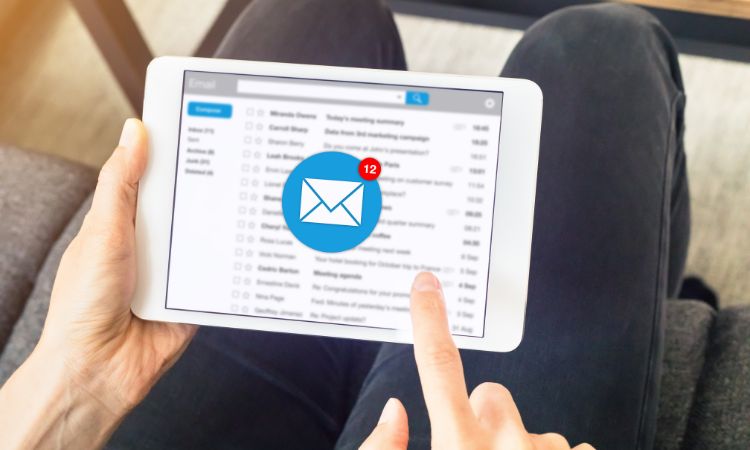Hotmail, now known as Outlook.com, has been a trusted email service for decades. Whether you’re a newcomer or a long-time user, knowing how to send an email on Hotmail effectively is essential. In this guide, we’ll walk you through the entire process, from setting up your account to mastering advanced features. So, let’s dive in and become a Hotmail emailing expert. If you have any issues, please get in touch with us at software warranty Hotmail Support to resolve the issue.

Setting up a Hotmail Account
Choosing a Username
The first step to access Hotmail’s emailing capabilities is to create an account. When choosing a username, keep it professional and easy to remember. Avoid using overly complex or confusing usernames.
Creating a Strong Password
Your account’s security depends on a strong password. Combine uppercase and lowercase letters, numbers, and symbols to create a tough password. Make sure it’s unique to your Hotmail account and not used elsewhere.
Filling Out Personal Information
Hotmail may require personal information, such as your name and phone number, for account recovery purposes. Fill out this information accurately to ensure you can regain access to your account if needed.
Verifying Your Account
To prevent spam accounts, Hotmail may ask you to verify your identity through a CAPTCHA or by sending a code to your phone or email. Follow the verification steps to confirm your account.
Logging In for the First Time
Once your account is verified, log in for the first time. Hotmail’s user-friendly interface will guide you through the initial setup process, including choosing a theme and setting up your inbox.
Composing an Email on Hotmail
Accessing the Hotmail Interface
To compose an email, log in to your Hotmail account and click on the “New Email” button. This will open a new email composition window.
Clicking on “New Email”
The “New Email” button is usually prominently displayed in your inbox. Click on it to begin composing your message.
Adding Recipients
In the “To” field, enter the recipients’ email addresses. Hotmail will auto-suggest contacts from your address book as you type.
Composing the Subject Line
A clear and concise subject line helps recipients understand the purpose of your email. Keep it brief and relevant to your message.
Writing the Email Body
Compose your email message in the main text field. You can use the formatting options to style your text, add links, or insert images.
Formatting Your Email
Hotmail offers various formatting options, including font styles, sizes, and colors. Use these tools to make your email visually appealing.
Adding Cc and Bcc Recipients
If you need to send a copy of the email to others without the primary recipient’s knowledge (Bcc), or if you want to notify additional recipients (Cc), use these fields accordingly.
Sending an Email on Hotmail
Clicking “Send”
Once your email is ready, click the “Send” button. Hotmail will confirm that your email has been sent and provide an option to undo it if needed.
Reviewing Your Email
Before sending, take a moment to review your email for errors or missing information. Ensure that all recipients and attachments are correct.
Confirming Receipt
Hotmail will notify you when your email is successfully delivered to the recipient’s inboxes. You’ll also receive notifications if there are delivery issues.
Using the Outlook App
For on-the-go emailing, consider installing the Outlook app on your mobile device. This app provides easy access to your Hotmail account and ensures you never miss an important email.
Scheduling Emails
Hotmail allows you to schedule emails at a specific date and time. This feature is handy for planning ahead and ensuring your message reaches the recipient at the right moment.
Adding Attachments
Attaching Files from Your Device
To include attachments, click the paperclip icon in the email composition window. Select the file you want to attach from your device’s storage.
Attaching Files from OneDrive
Hotmail seamlessly integrates with OneDrive, Microsoft’s cloud storage service. You can attach files stored on OneDrive, making sharing large documents or photos easy.
Managing Attached Files
Review and manage attached files by clicking on the attachment icons in your email. You can download, preview, or remove attachments as needed.
Organizing Your Hotmail Inbox
Creating Folders
To keep your inbox tidy, create folders to categorize and store emails. For example, you can have separate folders for work, personal, and newsletters.
Moving Emails to Folders
Drag and drop emails into folders to organize them. This helps you quickly find specific emails and declutter your inbox.
Using Categories
Categories are color-coded labels that you can assign to emails. They provide an additional level of organization and visual distinction for your messages.
Flagging Important Emails
Flagging emails marks them as essential or needing attention. Use flags to prioritize emails and ensure you don’t forget important tasks or messages.
Archiving Emails
If you want to keep emails for reference without cluttering your inbox, consider archiving them. Archived emails are stored safely for later retrieval.
Deleting Unwanted Emails
Regularly delete emails you no longer need to free up storage space and maintain an organized inbox.
Managing Contacts
Adding Contacts
Building a contact list is crucial for efficient emailing. Add contacts manually or import them from other sources, such as your phone or social media.
Editing Contact Information
Keep contact details up to date by editing them as needed. Ensure email addresses and other information are accurate.
Deleting Contacts
Remove contacts you no longer need from your list. This streamlines your contact list and keeps it relevant.
Creating Contact Groups
Contact groups make it easy to send emails to multiple recipients at once. Create groups for work colleagues, friends, or family to simplify your emailing process.
Customizing Hotmail Settings
Personalizing Your Inbox
Hotmail allows you to personalize your inbox with themes and colors. Choose a layout that suits your style and preferences.
Changing Language and Time Zone
If you’ve moved or prefer a different language, you can easily change your language and time zone settings in Hotmail.
Setting up Vacation Replies
When you’re away, set up automatic vacation replies to inform senders that you’re unavailable. This is a professional way to manage expectations.
Managing Security Options
Hotmail offers robust security options, including two-factor authentication. Ensure your account is secure by exploring and configuring these settings.
Managing Blocked Senders
Block unwanted emails and spam by adding senders to your block list. This prevents them from cluttering your inbox.
Troubleshooting Common Issues
Problems with Sending Emails
If you encounter issues sending emails, double-check your internet connection, recipient addresses, and email size. Also, ensure your account is not compromised.
Receiving Emails
Check your inbox regularly and verify that you’re receiving emails as expected. Review your email filters and blocked senders list if emails aren’t arriving.
Forgotten Password
If you forget your password, use Hotmail’s account recovery options to reset it. Ensure you have up-to-date recovery information on your account.
Hacked Account
If you suspect your account has been hacked, change your password immediately and review your account activity for any unauthorized access.
Spam and Junk Emails
Hotmail has built-in spam filters, but some unwanted emails may slip through. Mark these emails as spam to improve the filter’s accuracy.
Error Messages
If you encounter error messages while using Hotmail, take note of the message and search for solutions online or contact Hotmail support for assistance.
Conclusion How to Send an Email on Hotmail
Congratulations! You’ve now become proficient in sending emails on Hotmail. From setting up your account to mastering advanced features, this guide has covered it all. With this knowledge, you can communicate effectively and efficiently using Hotmail. If you ever encounter challenges or have questions, don’t hesitate to refer to this comprehensive guide. Happy emailing!
Related Article: Hotmail Support: The Ultimate Guide to Resolving Your Email Issues

